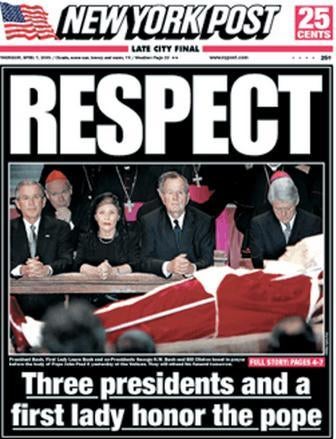
In many parts of the world there is concern – even apprehension – about the future of journalism. But probably no-where more so than in the United States.
More journalists are being laid off than any time in the past. Last year there were cutbacks at such papers the San Francisco Chronicle, the Seattle Times , the San Jose Mercury News and even the biggest-selling paper of all, USA Today. The cutbacks are now becoming so commonplace they evoke little comment outside the paper’s respective home towns.
And the prospects don’t seem to auger well. Shares in many papers, including even the New York Times, have tumbled. Profits have declined noticeably. Advertising which has its ups and downs – has had more downs lately. Adjusted for inflation, ad revenue last year was down more than 20 per cent. Circulation has been sliding about two per cent a year. Papers such as The Los Angeles Times, The Boston Globe, The San Francisco Chronicle, have all lost circulation in the last few years.
A new survey, just out, conducted by the University of Maryland on behalf of the American Newspaper Guild (the US equivalent of the NUJ) and the National Association of Broadcast Employees and Technicians, indicated growing apprehension about the future of the news industry overall. Altogether about 1,300 people were interviewed, including almost 1,000 working journalists., about half of them male, average age about 46..
More than half reported their readership or audience has shrunk more than 60 per cent over the past five years . Asked if they thought the trend might change and perhaps stabilize, about three-quarters replied pessimistically: ‘It’s hard to say it ever will.’
The survey indicated mixed feelings whether blog sites should be counted as journalism. Over 60 percent felt their audience prefers a ‘professional’brand of news from trained journalists. But many doubted there would be jobs for such journalists in the future. About 43 per cent of the print journalists said they had little confidence they would be working for a newspaper in five years. About 30 per cent were not sure.
Another disturbing aspect of the changes taking place is that accuracy no longer seems to be important as it was. About 94 per cent said that accuracy was important when they started their jobs – but the figure is dropping, The expectation that journalists should ‘serve the public”, as well as providing ‘credibility’ is also falling, many felt. Making a profit and attracting a big audience is now regarded as more important to many news companies.
Newspaper Guild president Linda Foley, talking to the American Journalism Review, suggested one change has been that reporters no longer return to the newsroom to write their stories. That is missing nowadays, in an age when reporters can file stories without even meeting their co-workers.
About 57 per cent also said they spend one to two work- related hours a day on the Web. ‘Time online is time not talking to sources’suggested the Guild president.
‘At all levels of the industry from board room to mailroom, no one has a really good idea of where this industry is going .”
Email pged@pressgazette.co.uk to point out mistakes, provide story tips or send in a letter for publication on our "Letters Page" blog

